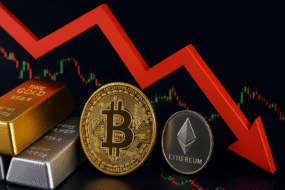Gold prices are expected to remain under short-term pressure as a strong U.S. dollar continues to weigh on the yellow metal, according to Maneesh Sharma, AVP – Commodities & Currencies at Anand Rathi Shares and Stock Brokers.
During the past week, spot gold slipped below $4,000 per ounce, extending its subdued trend amid improved global risk sentiment following constructive U.S.–China trade developments. Meanwhile, the Dollar Index tested the 100 mark, supported by mixed signals from U.S. Federal Reserve officials regarding the future of interest rate cuts.
Sharma noted that uncertainty persists due to the ongoing U.S. federal government shutdown, which has delayed major macroeconomic data releases. “Gold may continue to trade within a limited upside range, showing consolidative moves ahead of the private ADP employment report,” he said.
China’s Tax Rule Dampens Sentiment
Adding to the pressure, China’s Ministry of Finance recently cut the value-added tax (VAT) exemption on gold purchased through the Shanghai Gold Exchange and Shanghai Futures Exchange from 13% to 6%, effective November 1, 2025.
This move disappointed Chinese investors, as it removed a long-standing tax incentive that had fueled strong domestic trading in gold.
Market Outlook: Sideways to Slightly Negative
Sharma expects gold to maintain a sideways to slightly negative bias in the coming week.
- Spot Gold (CMP: $3,995 per oz) may face resistance near $4,000–4,050, with potential downside levels between $3,950–3,825 per oz.
- Dollar Index could rise further to 101–101.50, keeping bullion gains capped.
- On MCX futures, gold (CMP ₹1,20,950 per 10 gm) is likely to face resistance around ₹1,23,000–₹1,24,600, while support is expected near ₹1,17,600–₹1,18,000 levels.
Seasonal Demand Could Support Year-End Rally
Despite near-term weakness, analysts believe that seasonal demand from India’s wedding season, starting mid-November, could offer medium-term support to prices. Historically, December and January are considered favorable months for gold as both retail and investment demand tend to rise.
Sharma added that lingering concerns about geopolitical risks, trade uncertainties, and the prolonged U.S. government shutdown may act as tailwinds for gold towards the end of the year, potentially triggering a renewed rally.





